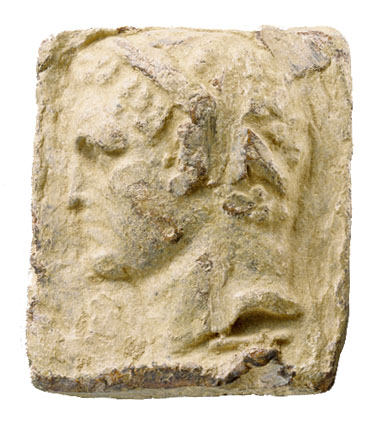
-
Copyright credit: J. Paul Getty Museum

ARCHAEOLOGICAL DESCRIPTION OF THE WEIGHT
Authority
Seleukos I, Seleucid King
Mint
Denomination
Material
Lead
Manufacture
Cast
Shape
Square
Length
5.72 cm
(2.25 inch)
Width
4.76 cm
(1.875 inch)
Height
0.79 cm
(0.3125 inch)
Metrology
| Mass (g) | Mass (grain) | Date of measurement | Reference | fragmented | cleaned | reference weight |
|---|---|---|---|---|---|---|
| 159.98 | 2468.9003 | - | www.getty.edu | No | No | Yes |
Iconography
| Symbol | Technique | Direction | Position | Number | Synecdoche |
|---|---|---|---|---|---|
| Male figure | Relief | LEFT | Head |
Wear
Corrosion
Handle
No
Suspension hole
No
Recarved mould
No
Recarved weight
No
Intentionally destroyed
No
Archaeological description
After Alexander the Great's death in 324 B.C., his generals divided his vast kingdom among themselves. Seleukos seized the largest portion, the area stretching east from the coast of present-day Turkey and Syria, and became the first ruler of the Hellenistic Seleucid dynasty. The beardless man shown on this weight probably represents Seleukos I. Several elements of this head match known portraits of Seleukos: short, thick hair; deep-set eyes; curved mouth; and broad, circular diadem. In the mid 200s B.C. lead weights were generally used for commercial purposes. This weight appears to have been cast from an official bronze weight-standard with clearer features. The emblems used on weights often have civic meaning and this weight probably came from one of several cities named Seleucia in honor of the ruler. A rectangular plaque like this was used with a simple balance scale. The undecorated back surface of the plaque is somewhat irregular, probably from the process of adjusting the weight.
Autopsy
No
INSCRIPTION
| Language | Technique | Legend type |
|---|
Fac simile
Edition
Monogram
ARCHAEOLOGICAL CONTEXT
Findspot (region)
Findspot (site)
context
CIRCUMSTANCES OF ACQUISITION
Region
City
Date of first acquisition
circumstances
Gift of Barbara and Lawrence Fleischman (New York, 1925 - New York, 1997) to the J. Paul Getty Museum in 1996. Sold to Barbara and Lawrence Fleischman in 1989, Fritz Bürki & Son (Zurich, Switzerland).
DATING OF THE WEIGHT
Curatorial Section
GREEK
Time frame
FROM
-305
TO
-250
Comments on Chronology
About 250 B.C.
COLLECTION HISTORY
Collection
| Name | Date of acquisition | Inventory number |
|---|---|---|
| Fleischman Collection | Jan. 1, 1989 | F142 |
| Getty Museum – Getty Villa (Malibu) | Jan. 1, 1996 | 96.AI.141 |
Bibliography
| Reference | Page/Column | Reference (number) | Plate / Figure | Comment |
|---|---|---|---|---|
| True and Hamma 1994 | 200 | 93 | ||
| Getty Museum 1997–98 | 69 |
VARIA
Additional comment
Asia Minor.
Permalink